Tire pressure monitoring system (part 1)
The tire pressure monitoring system (TPMS) are something I frequently monitor on my primary vehicle. I have the impression that tire pressure is even more important on an electric vehicle. There are two types of TPMS: direct and indirect. The e-Golf uses the indirect variant, which cannot be monitored until it is too late.
The indirect system uses the ABS wheel speed sensors to measure the wheels. When the pressure drops, the wheel rolling radius decreases (it becomes flatter). When it exceeds a certain threshold, the driver is notified. This system can only detect underinflation. It also needs to learn what the normal condition is, so you need to press the TPMS SET button each time you inflate your tires.
The direct system uses sensors in each wheel (attached to the valve stem) and measures the pressure directly. This information is then transmitted to a sensor and displayed on the instrument cluster and infotainment system. This system is often called TPMS-high.
I bought a kit from eBay, which included the TPMS sensor, four wheel sensors,
and the necessary wiring. The TPMS sensor has part number 5Q0 907 273 B with
hardware version H04. The wheel sensors have part number 5Q0 907 275 F.
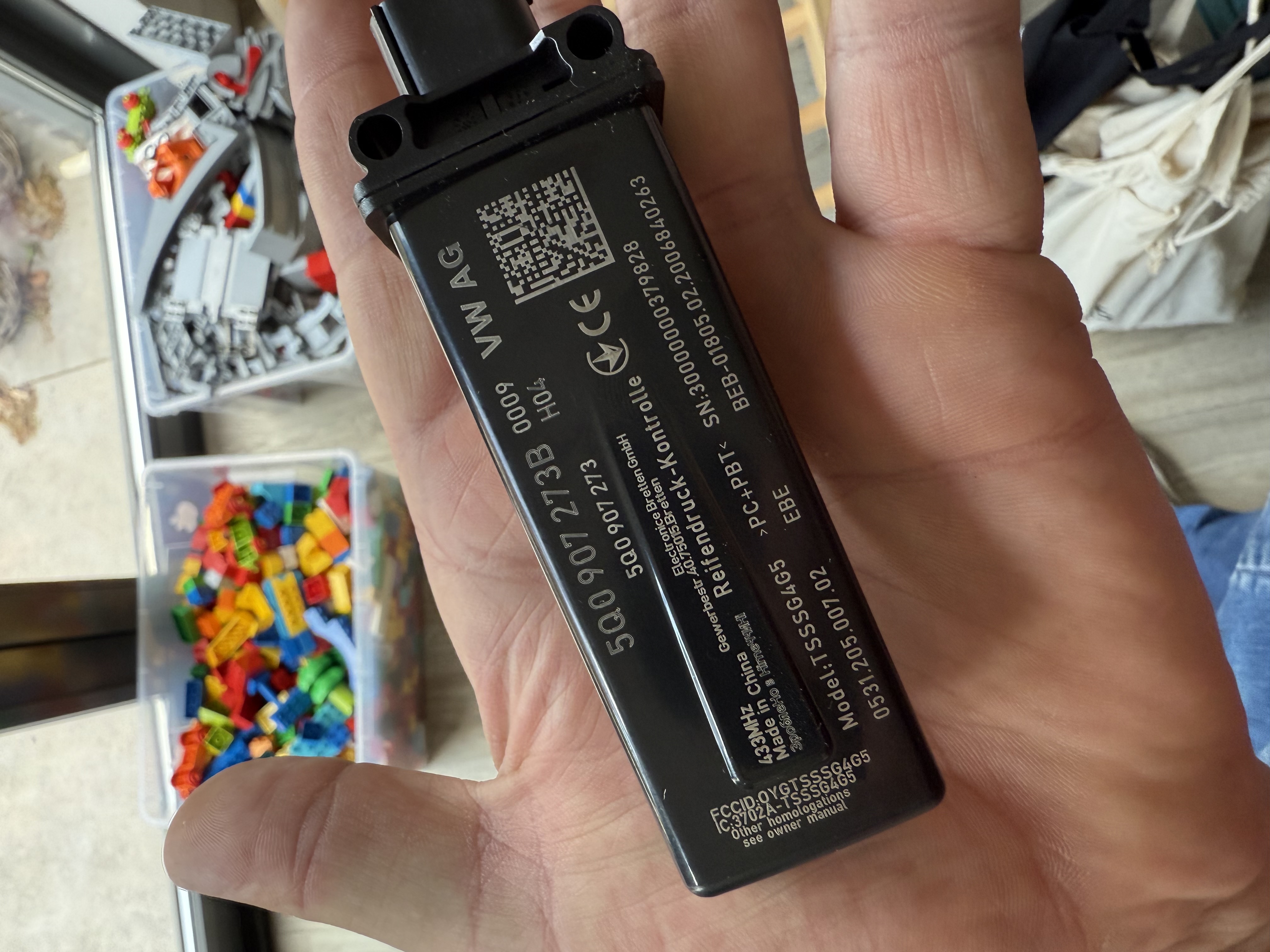
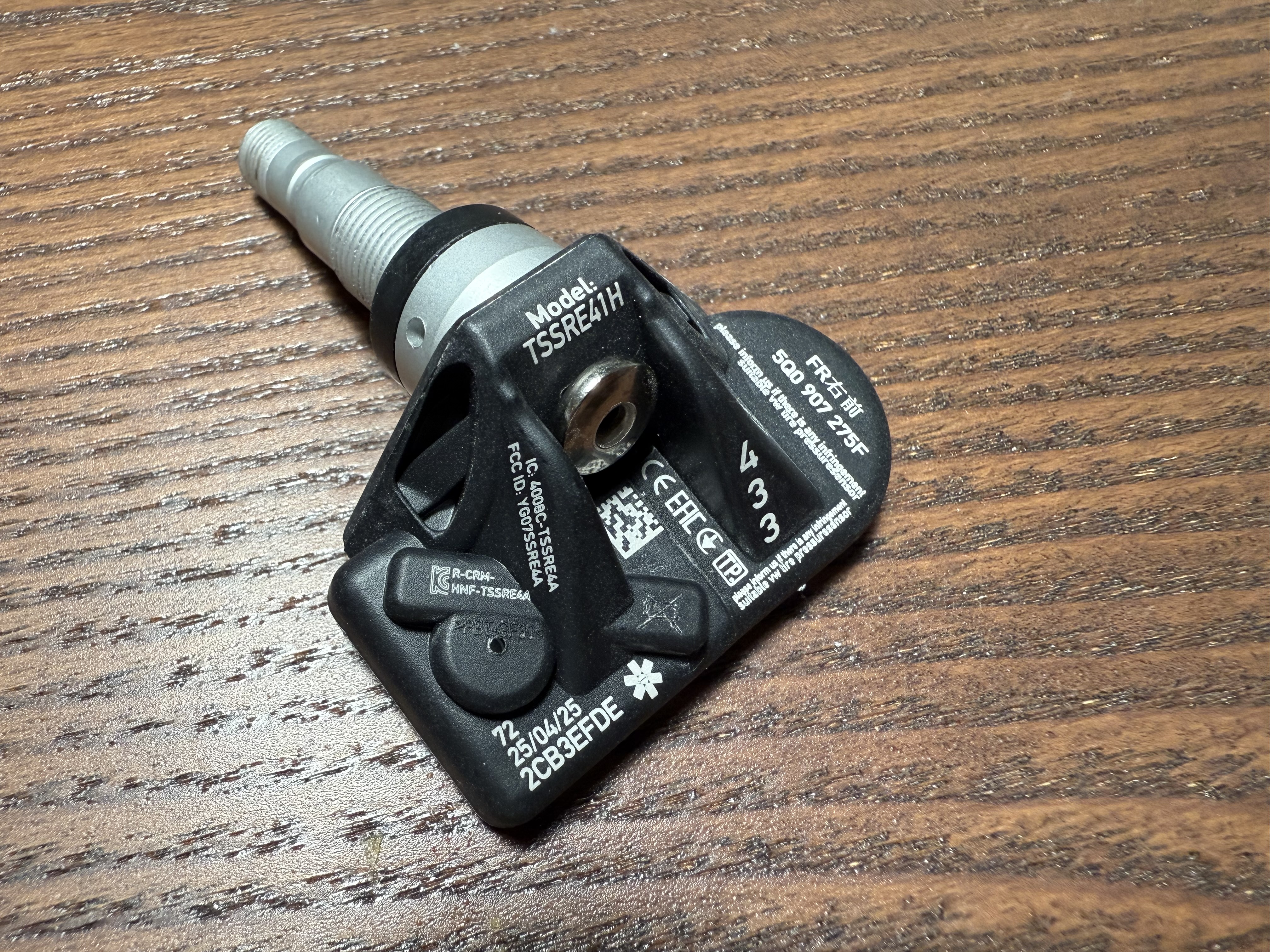
Using the test bench, I connected the TPMS sensor to the extended CAN bus using the pinout below. I then added it to the gateway installation list so I could access it.
Four-pin TPMS sensor connector (T4fh):
- T4fh/1 -> Extended CAN bus low
- T4fh/2 -> Terminal 30 (12 V)
- T4fh/3 -> Extended CAN bus high
- T4fh/4 -> Terminal 31 (ground)
This is where I became suspicious: communication with the sensor was
intermittent. VCDS constantly reconnected with the TPMS, which made the
interface unusable. However, it was able to identify the device, and the listed
hardware and software versions were different from those I expected: H05 with
software S051.
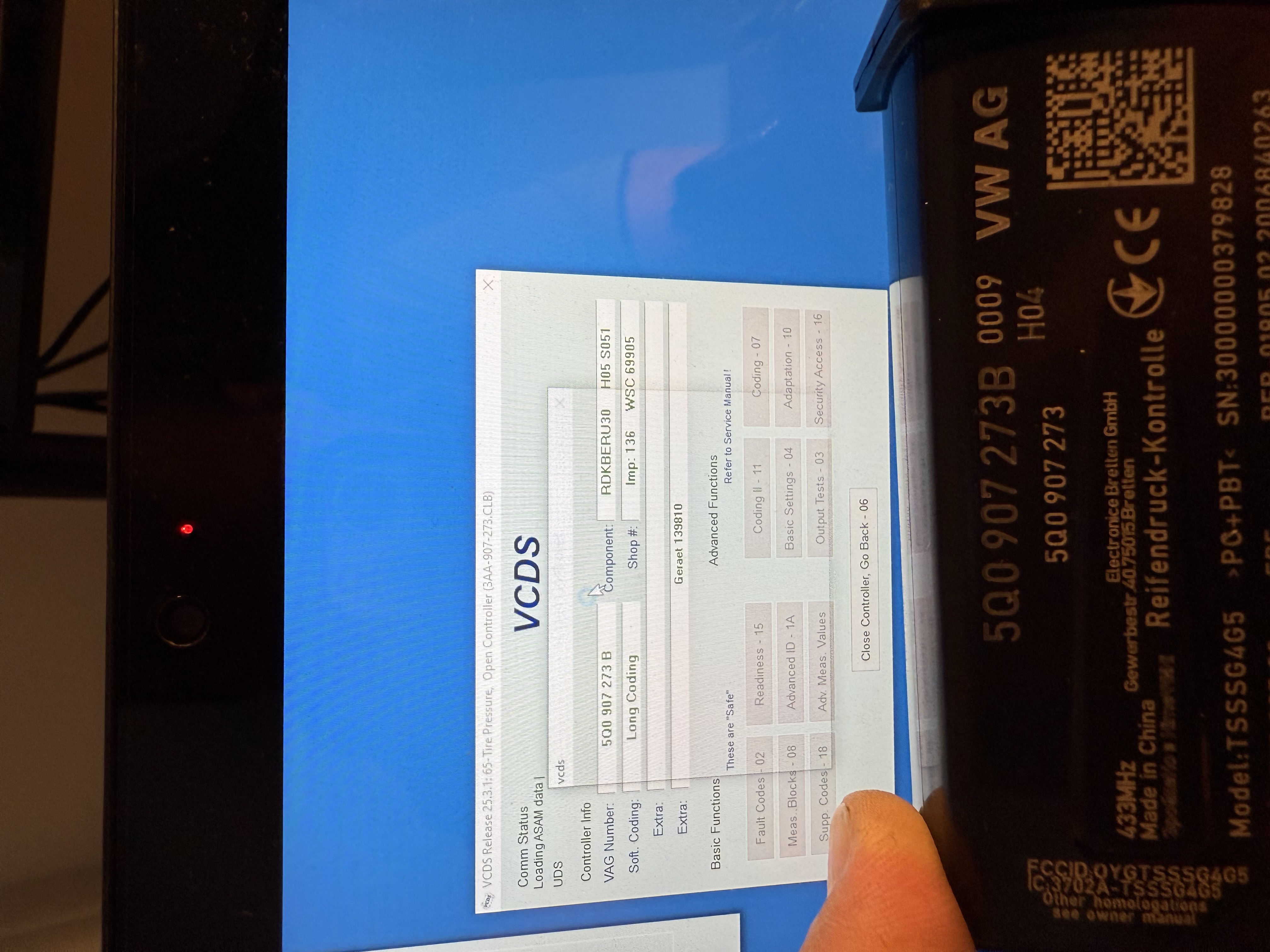
The TPMS sensor needs to be parameterized, which programs the nominal
pressures for one or more tire sets. The parameter file can be generated
using online tools. I created one for the e-Golf, which recommends 2.8 bar of
pressure for normal driving conditions. I attempted to upload the parameter
set using ODIS-E, but this failed as well. As a final attempt, I decided to
flash the sensor to a later firmware version. The sensor with part number
5Q0 907 273 B and software 0009 can be flashed to 5Q0 907 273 F with
software 0011. I tried this with the flash file FL_5Q0907273___0011.frf
and ODIS-E, but unfortunately this also failed.
After some research, I found this page which states that the sensor is a fake, based on a GD32 microcontroller housed in a counterfeit enclosure. There is nothing wrong with this microcontroller and the other parts used. It is just not of the grade typically used for automotive applications. I will contact the seller to resolve this issue and will likely look for an original sensor.
![Internals of a fake TPMS sensor (sourced from [1]).](/project-egolf/assets/posts/2025-05-18/fake.jpeg)
![Internals of a real TPMS sensor (sourced from [2]).](/project-egolf/assets/posts/2025-05-18/real.jpeg)
Designing a bracket
The Golf 7 never had the TPMS sensor as an option. Therefore, an official mounting bracket does not exist. I have seen people mount it on the bottom bumper bar, behind the bumper, or next to the gateway (albeit a counterfeit version). For the Passat and the Tiguan, the installation location is on the rear side of the vehicle. Using signal strength, it can then detect where each tire sensor is located.
Since no official mounting bracket exists, I decided to design a simple one using a 3D printer. Inspired by this one, I kept the design simple and used the two mounting holes on the TPMS sensor itself to bolt it to my bracket. I did not feel comfortable designing a bracket that would hold the sensor by itself, given that 3D printing using fused deposition modeling (FDM) prints layer by layer and I expect the part to be exposed to harsh conditions. The design is strong in the direction in which it mounts to the bumper bar and the TPMS sensor. The taller parts are only for alignment and have no functional purpose.
The bracket can be bolted onto the bottom bumper bar. This bar is also used to mount a tow bar, but the bolts are higher up. To avoid damaging the PU coating on the steel, I also designed a ‘washer’ that centers the bolt, so there is no metal-on-metal contact. The cable can enter the vehicle through a nearby rubber grommet.
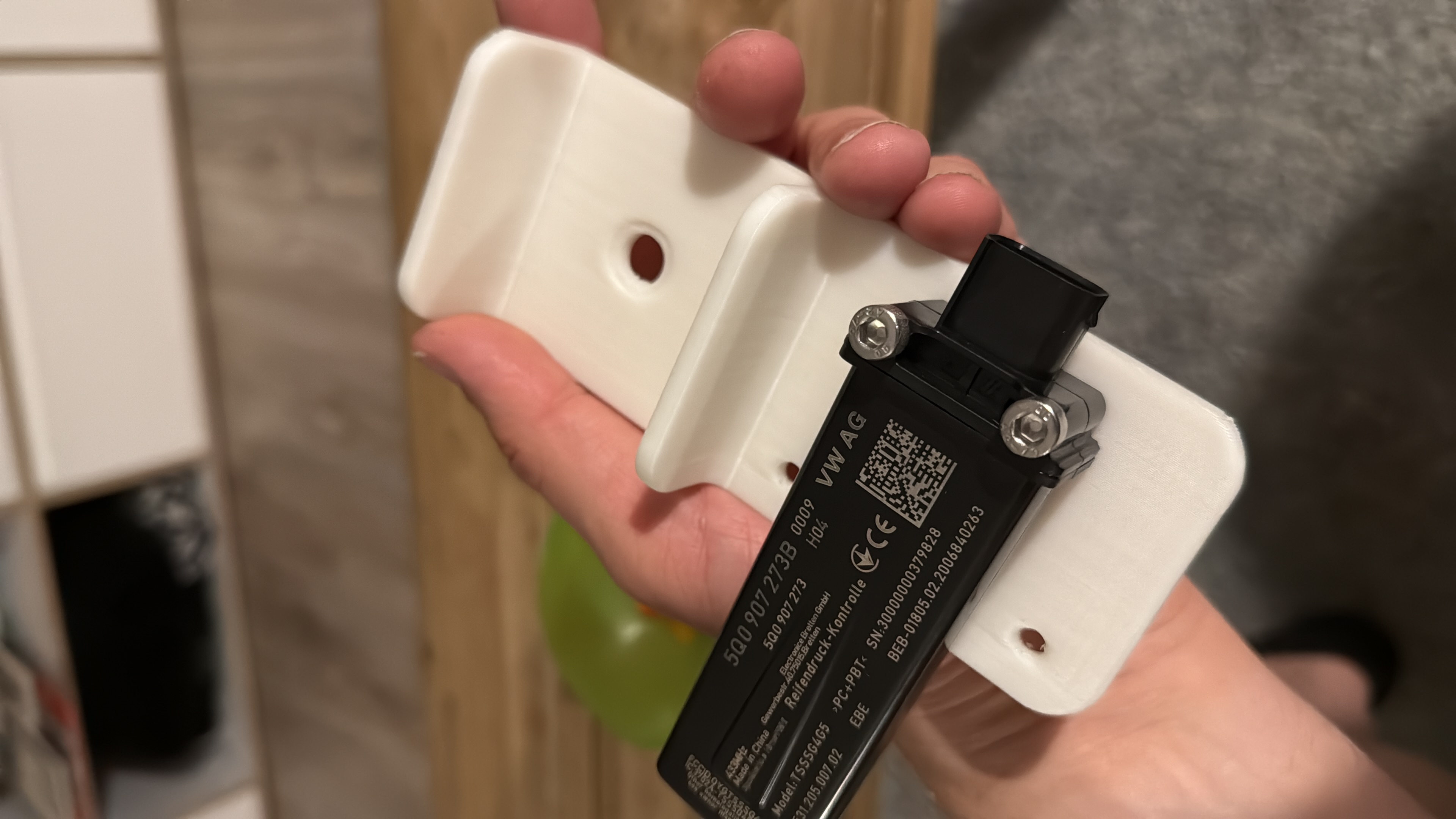
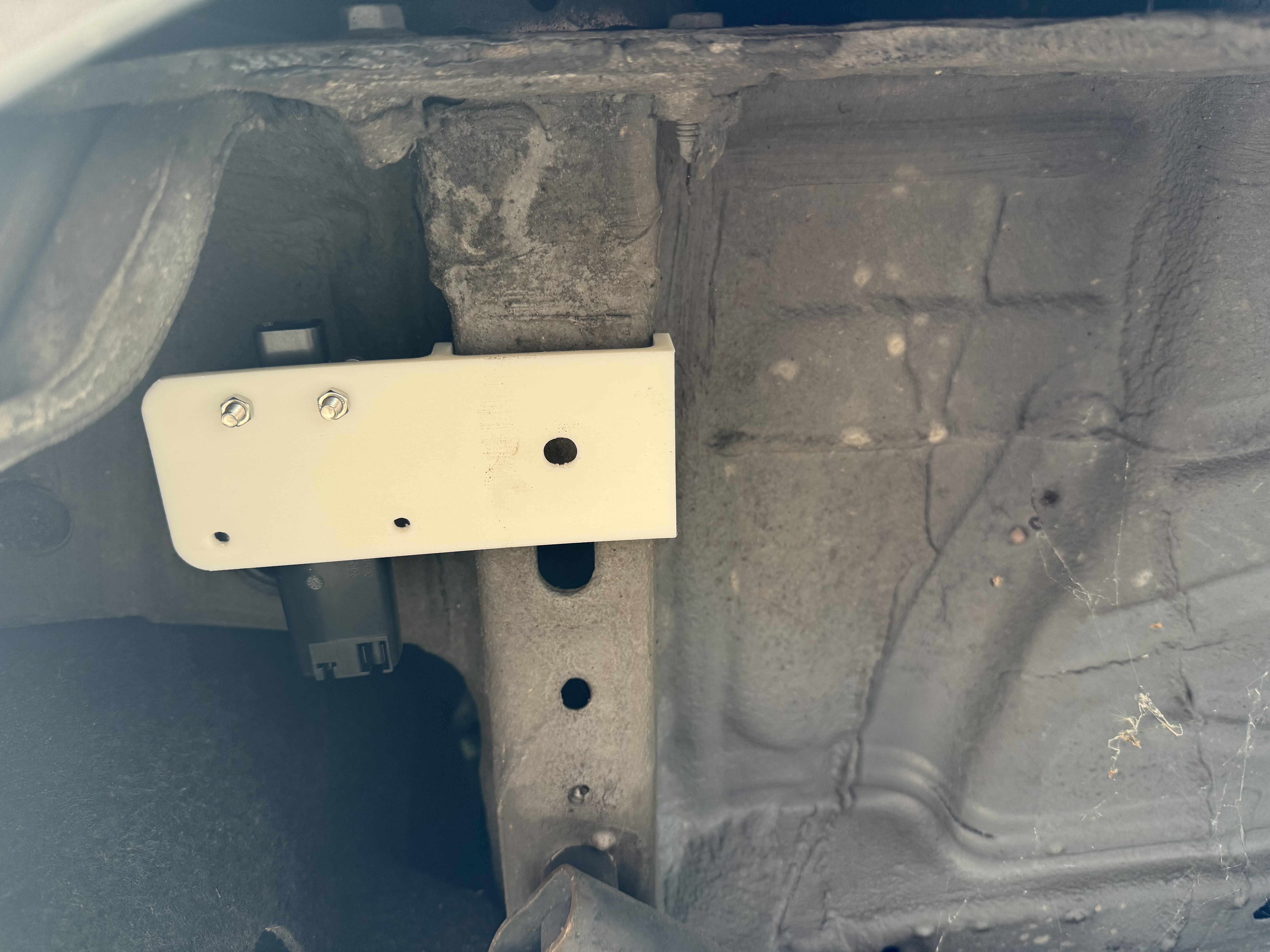
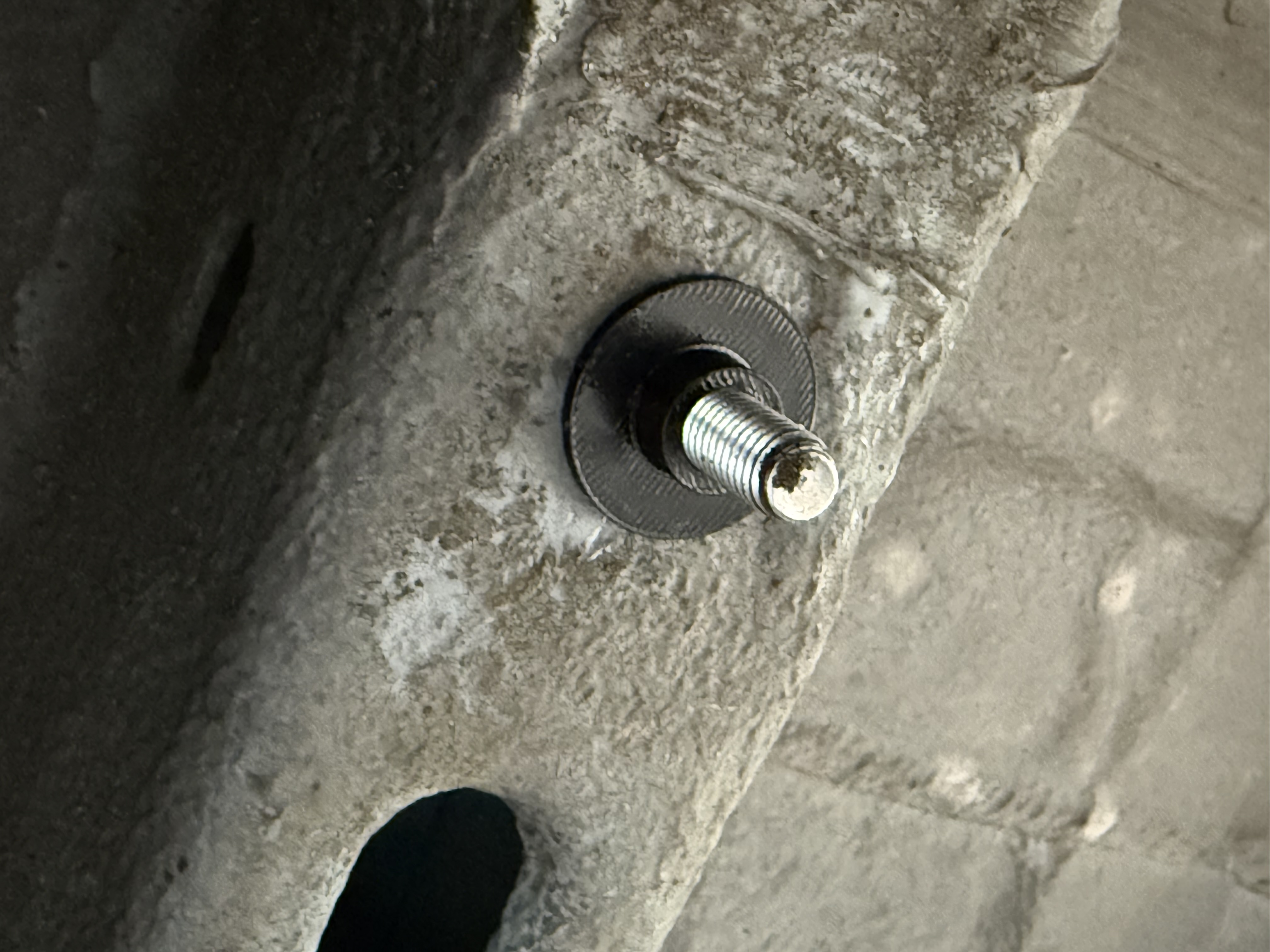
I made several prototypes to fine-tune the fit. Because I wanted to test how the bracket would hold up, I already mounted it under the car. I printed a dummy because I did not want to damage the counterfeit sensor since I do not know if I can return it.
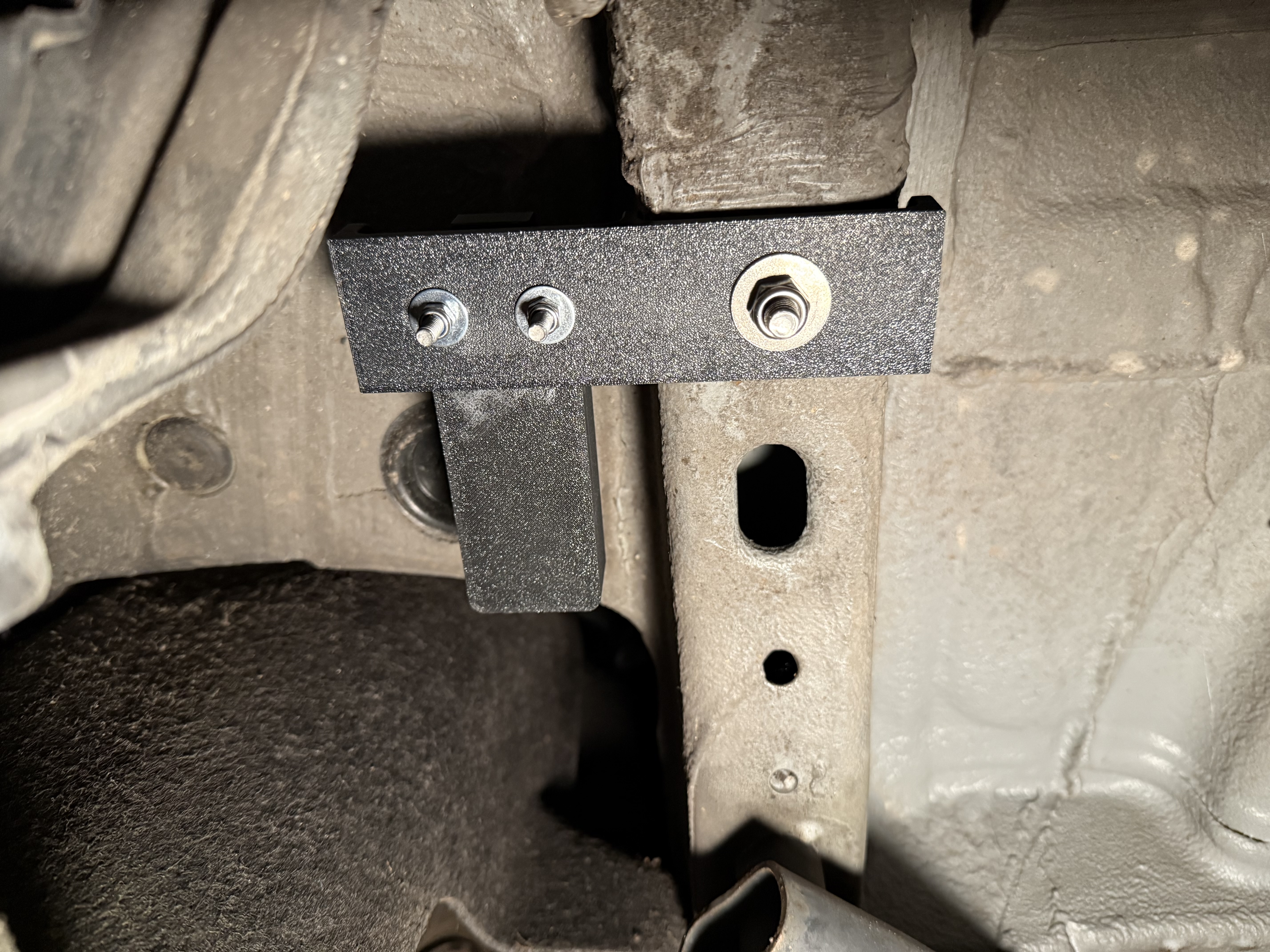
The bracket can be found on Printables.